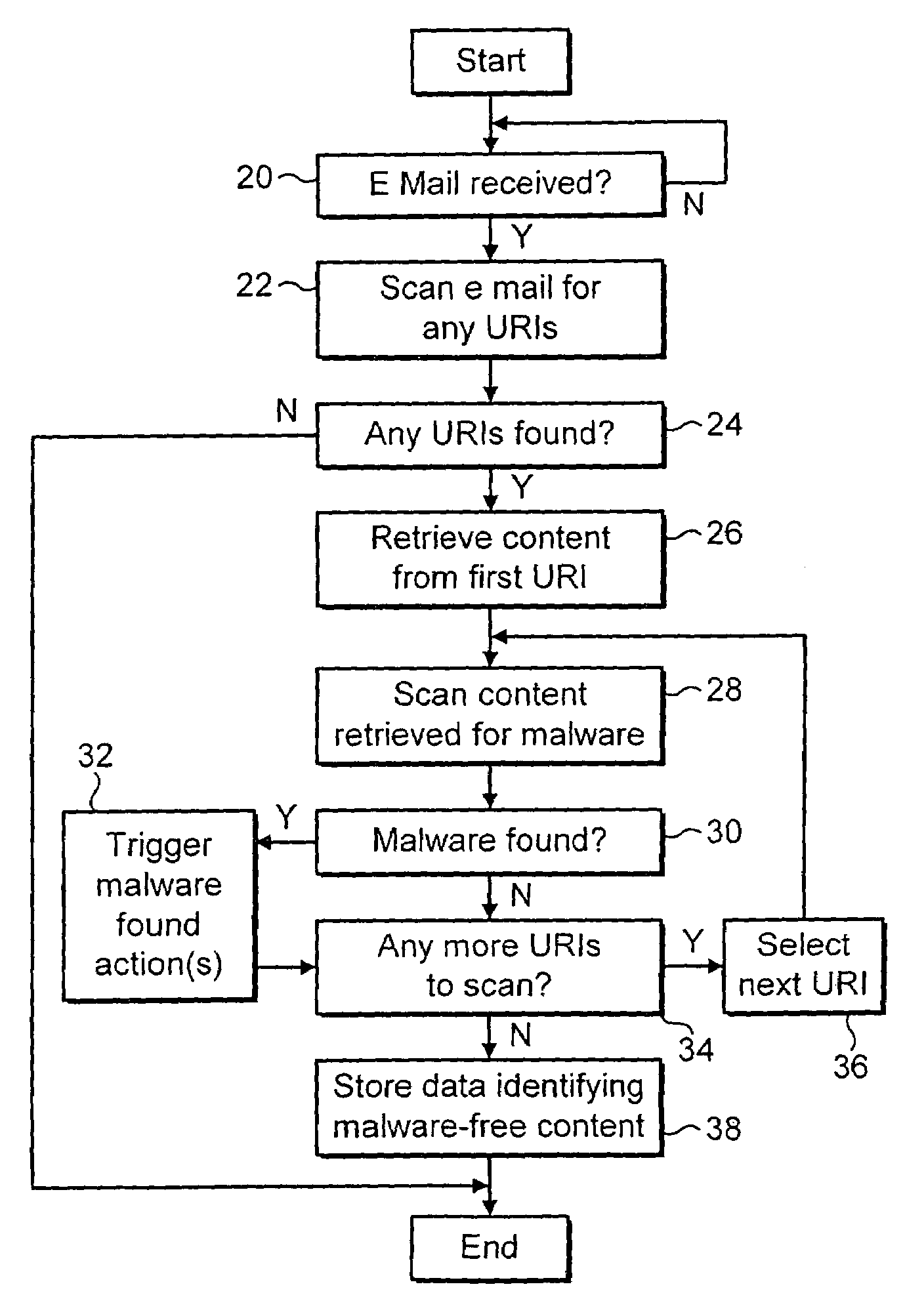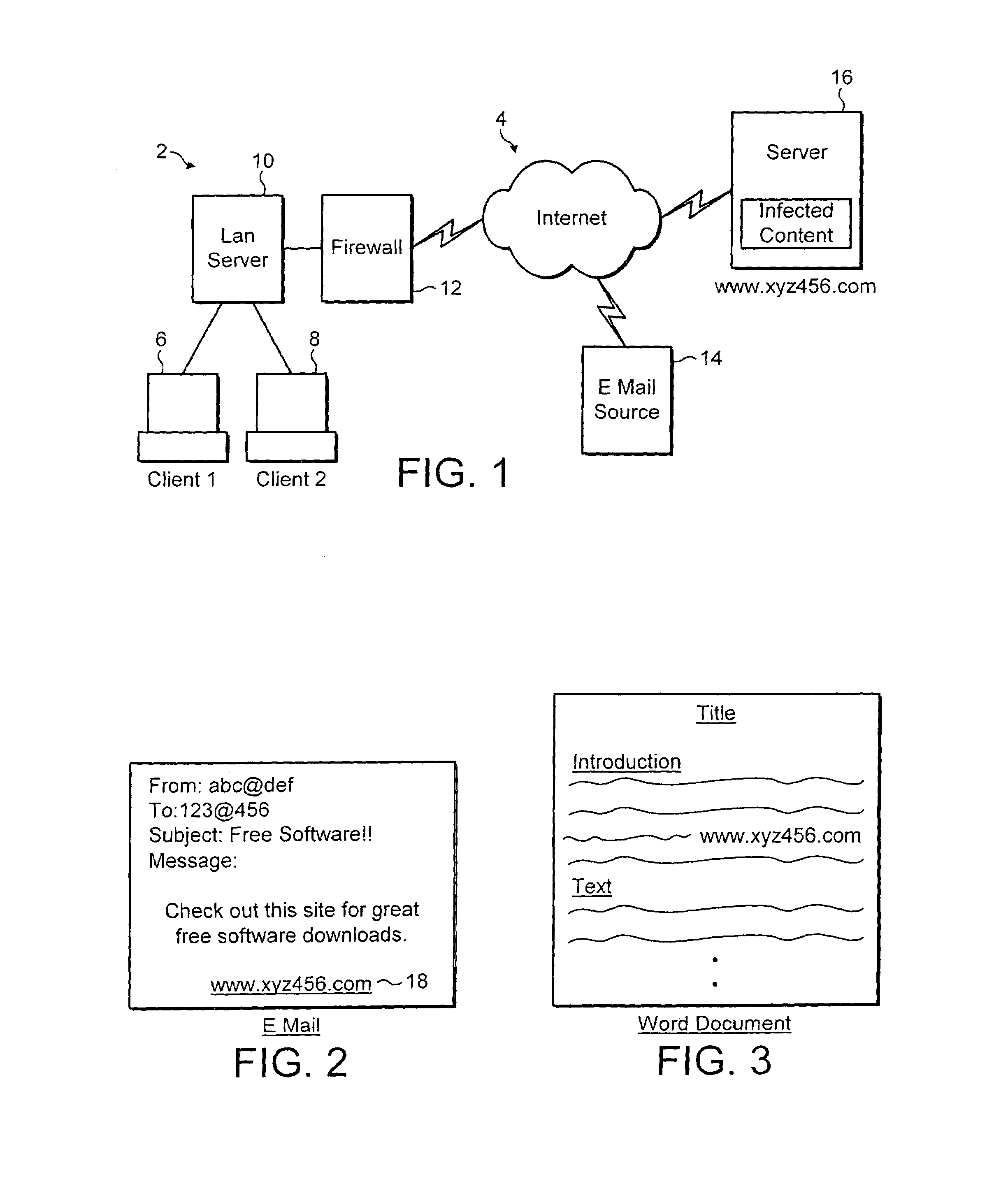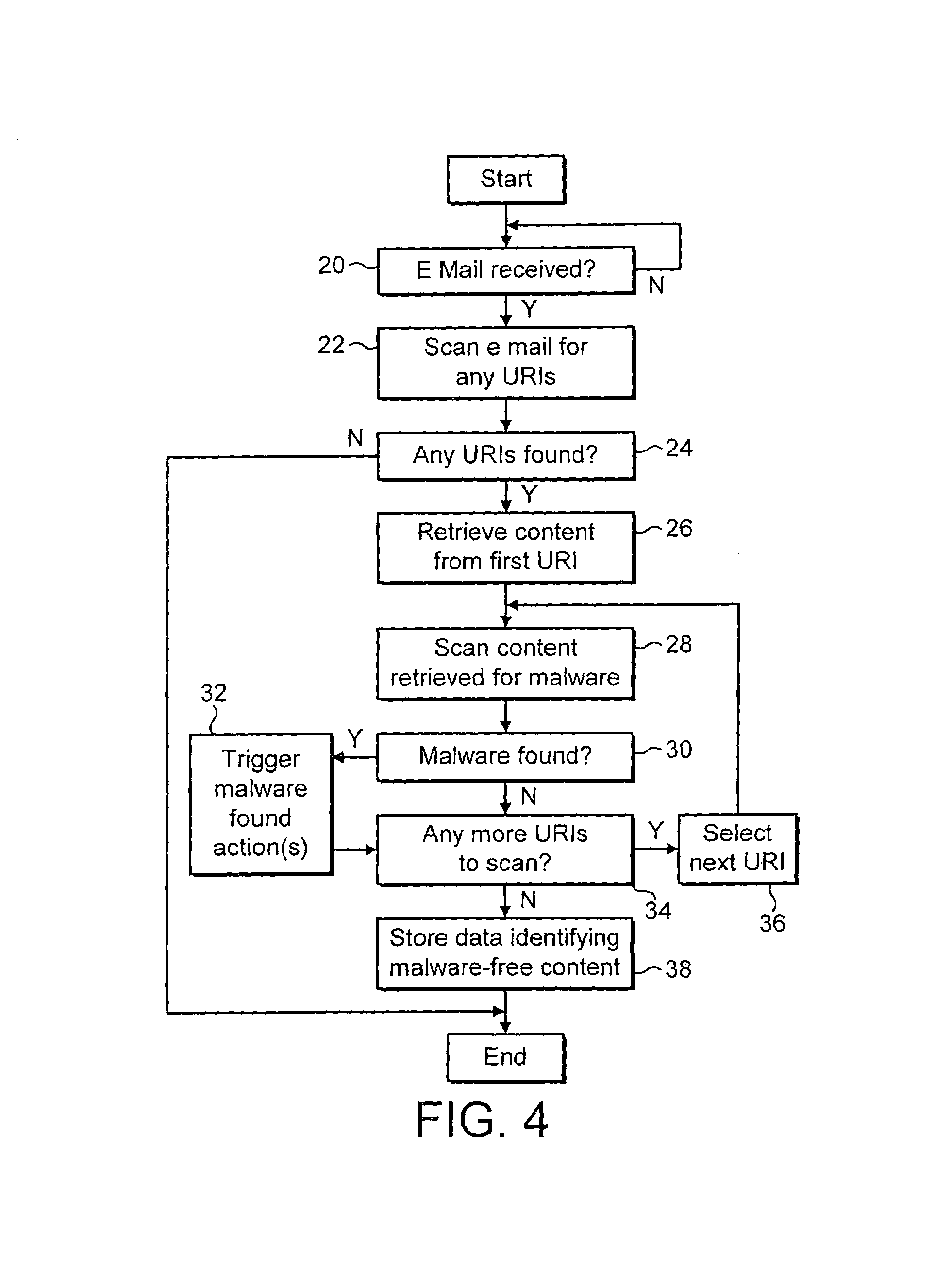Predictive malware scanning of internet data
a malware and internet data technology, applied in the field of data processing systems, can solve the problems of slowing down the speed with which data requested by a user from the internet is returned to that user, affecting the invention of data, and affecting the success of the invention, so as to facilitate the invention, facilitate the invention, and facilitate the provision of data. the effect of access
- Summary
- Abstract
- Description
- Claims
- Application Information
AI Technical Summary
Benefits of technology
Problems solved by technology
Method used
Image
Examples
Embodiment Construction
[0027]FIG. 1 illustrates a local area network 2 connected to the internet 4. The individual client computers 6, 8 connect to a local area network server 10. The local area network server 10 connects to the internet 4 via a firewall computer 12. The firewall computer 12 is responsible for applying security measures to resist unauthorised access to the local area network 2 via the internet 4. The firewall computer 12 may also perform malware scanning on received e-mail messages, attachments and internet webpage content received from the internet 4. Also connected to the internet are an e-mail source computer 14 from which e-mail messages or via which e-mail messages may pass to the local area network 2. An internet server 16 acts as a host for internet webpages that may be accessed by computers upon the local area network 2. This particular internet server 16 contains some webpage contents that is infected with malware, such as a computer virus or banned words or images.
[0028]FIG. 2 s...
PUM
 Login to View More
Login to View More Abstract
Description
Claims
Application Information
 Login to View More
Login to View More - R&D
- Intellectual Property
- Life Sciences
- Materials
- Tech Scout
- Unparalleled Data Quality
- Higher Quality Content
- 60% Fewer Hallucinations
Browse by: Latest US Patents, China's latest patents, Technical Efficacy Thesaurus, Application Domain, Technology Topic, Popular Technical Reports.
© 2025 PatSnap. All rights reserved.Legal|Privacy policy|Modern Slavery Act Transparency Statement|Sitemap|About US| Contact US: help@patsnap.com



